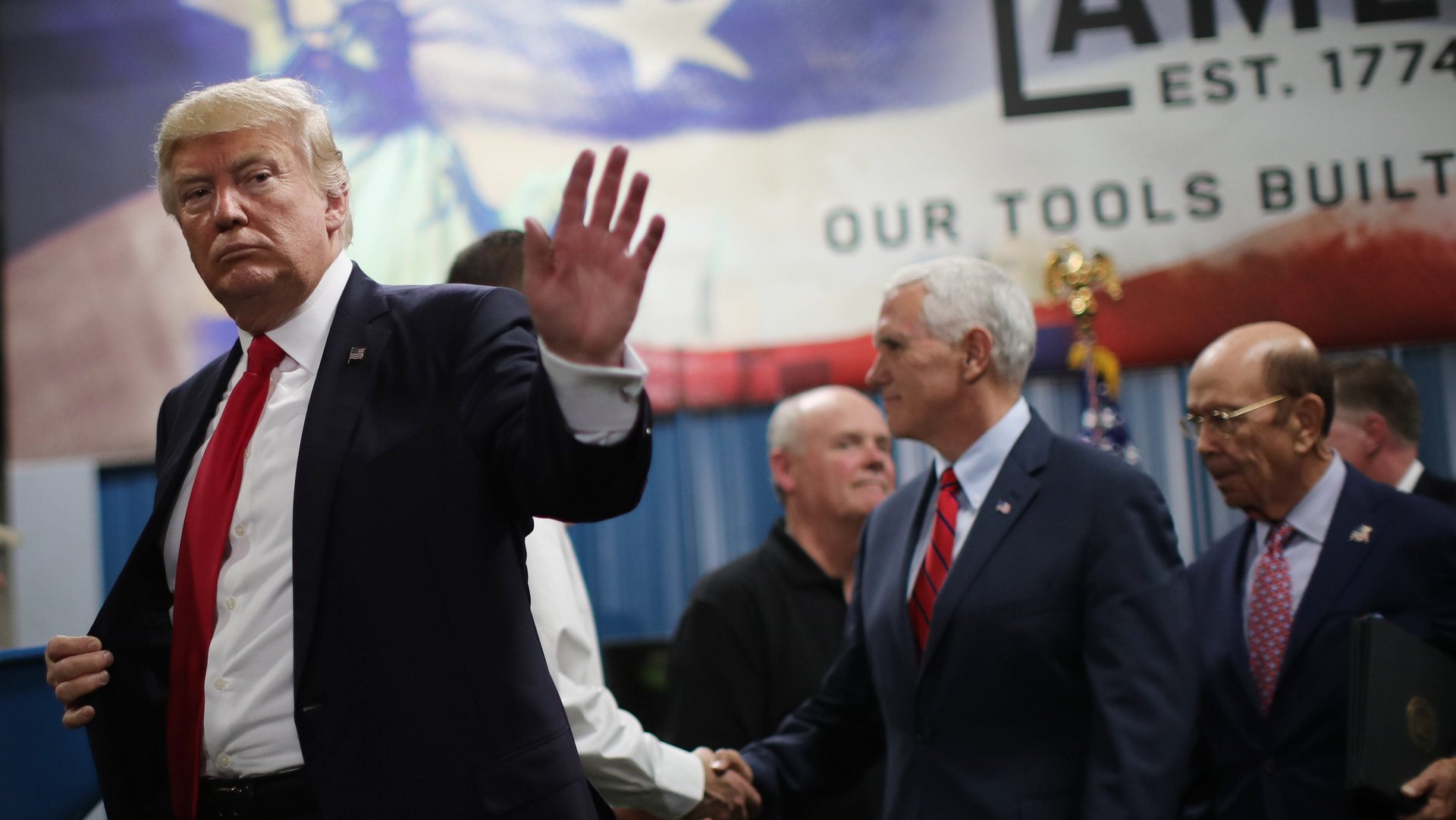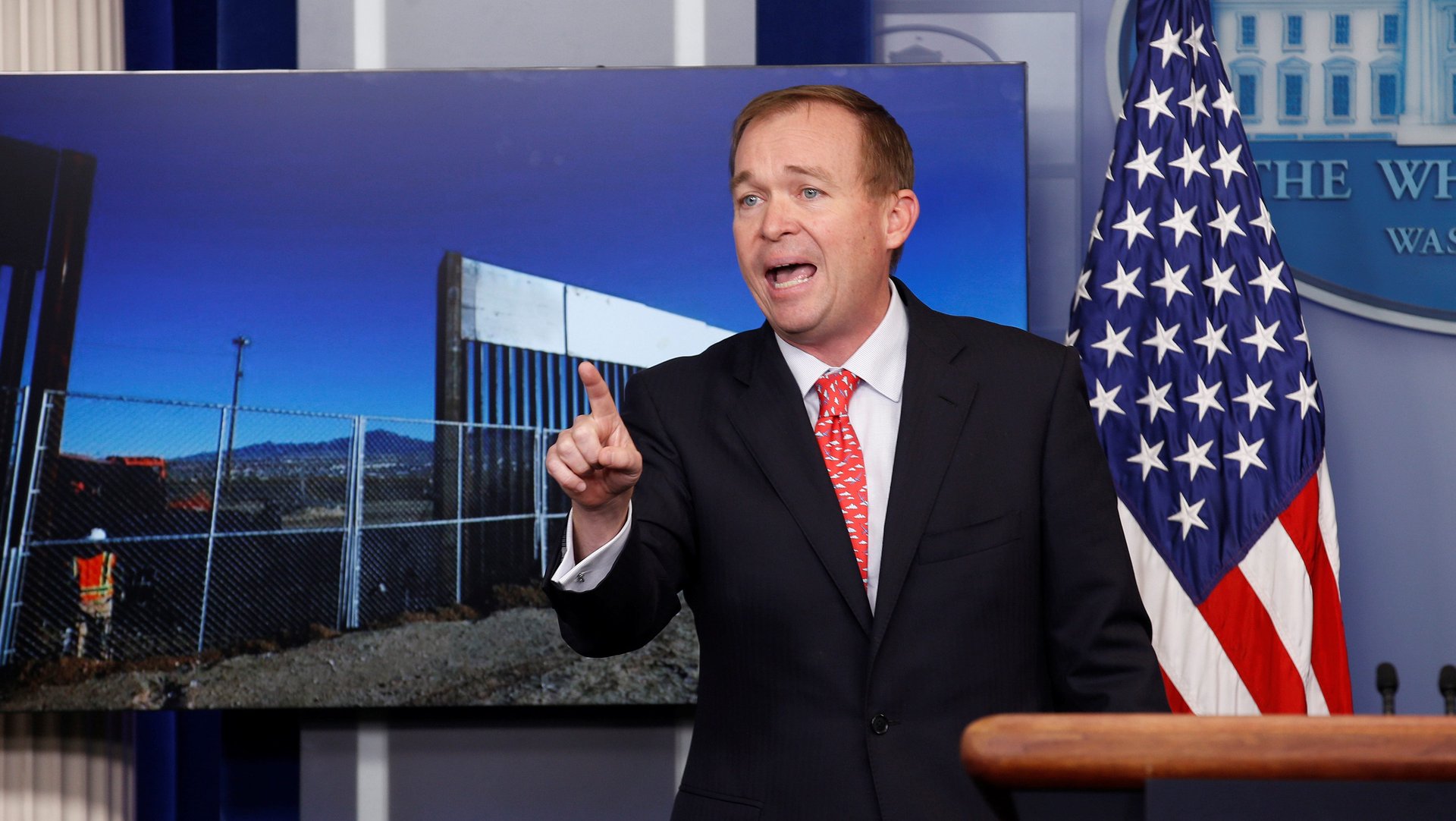Charted: Trump’s “America First” budget looks nothing like what the government will do in 2017
US budget director Mick Mulvaney took to the podium at the White House press room on Tuesday (May 2) with one message: President Donald Trump, and not the Democratic party, is the clear winner of the federal spending bill Congress crafted over the weekend—even though it bears little resemblance to Trump’s proposed “America First” budget.


US budget director Mick Mulvaney took to the podium at the White House press room on Tuesday (May 2) with one message: President Donald Trump, and not the Democratic party, is the clear winner of the federal spending bill Congress crafted over the weekend—even though it bears little resemblance to Trump’s proposed “America First” budget.
Mulvaney said the president was “frustrated,” by news coverage and Democratic celebration over the bill, which has been described as a defeat for Trump.

Congress eschewed the president’s drastic proposed cuts to health and other social services, the State Department, and the Environmental Protection Agency, among other agencies. The spending bill also doesn’t include funding for Trump’s border wall—although it does include funding to fix and replace existing border structures, which Mulvaney highlighted by showing photographs of steel walls in the press briefing room. “We are building this now,” he said.
Democrats are trying to “cover up the fact that they cut a deal with president Trump,” he said, and wanted a government shutdown, but didn’t get it. “They were desperate to make this administration look like it couldn’t function.” The House will vote on the bill today (May 3) and it is expected to pass there and the Senate before being signed by the president this week.
To be clear, the spending bill and the Trump budget are two different things. The first dictates funding for the federal government for the rest of 2017, while the second is Trump’s “America First” wish list for the 2018 budget.
Trump’s 2018 budget proposal was never expected to pass both houses of Congress just as he wrote it. Typically, a Republican president with a Republican-controlled House and Senate wields considerable leverage. The fact that the spending bill looks quite different from Trump’s proposed budget suggests he might not have as much leverage as he thought.
In the chart above, the numbers for the Trump budget percentage changes were calculated by the Office of Management and Budget using the fiscal 2017 continuing resolution—the stopgap funding bill Republicans signed at the end of Obama’s second term, which expired April 28. The numbers for the spending bill were calculated by Quartz using the 2016 fiscal year enacted budget levels for discretionary spending cited in the House bill, which are closely aligned with the fiscal 2017 continuing resolution.
The difference between Trump’s wish list and this year’s remaining budget is especially surprising given that Republicans purposefully signed only a stopgap budget after last year’s election in order to push funding negotiations into Trump’s term. Clearly, Republicans in Congress and the White House are not on the same page.
Mulvaney said the White House will turn next to the 2018 budget, and wouldn’t balk at a government shutdown if necessary to get it passed, echoing Trump’s tweet earlier in the day that the US “needs a good shutdown.”
“This puts 2017 to an end,” Mulvaney said Tuesday, “and the discussion about 2018 funding begins now.”